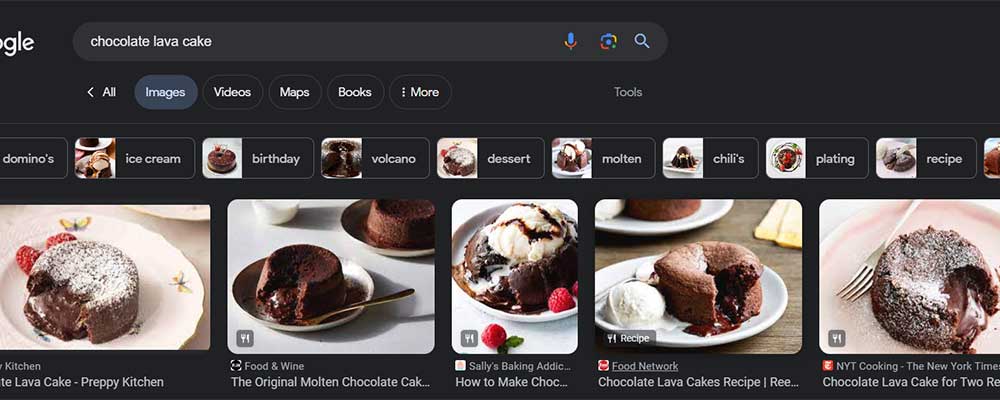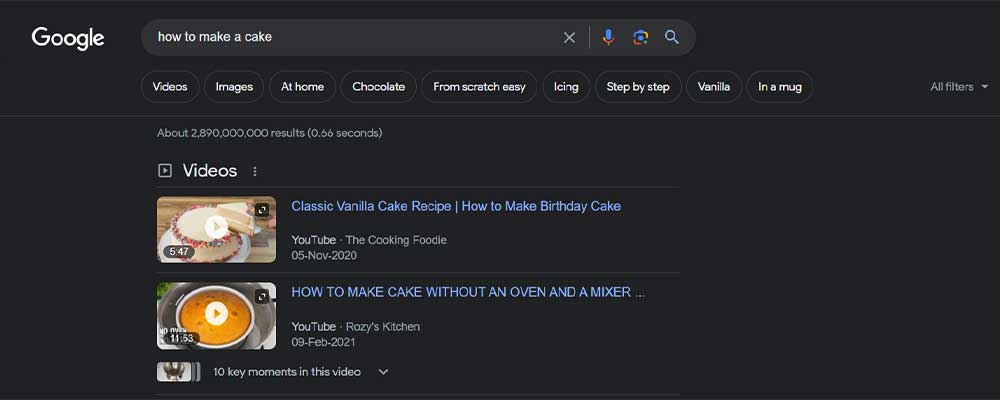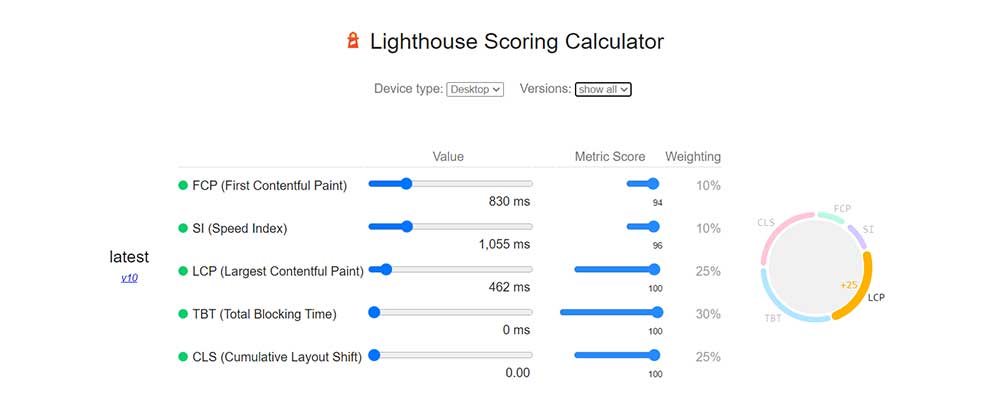10 SEO BEST Practices 2023
SEO, which stands for Search Engine Optimization, is like the rules of a search engine. Just like how following rules can help you get a high score in an exam, optimizing your website according to search engine guidelines can boost your chances of appearing on the first page of search results.
However, SEO practices continually change and require regular adjustments to align with the latest search engine algorithms and updates. That’s why we’ve created this blog to keep you updated on the best SEO practices for 2023, which will enhance your website’s ranking and expand your business’s reach.
Search Engine Optimization (SEO) is a rapidly growing part of digital marketing. Proper SEO can boost your website to Google’s first page, increasing traffic. Pairing SEO with PPC generates significant leads.
In addition, proper SEO offers numerous benefits such as excellent ROI, substantial lead generation, establishing brand credibility and trust, securing market share, and more.
Curious to know how? Just take a look at these current Google stats (as of writing this blog):
- Global internet users: Over 5 billion
- Total websites: Over 1 billion
- Google searches: Over 4 billion
Impressive, right? Woohoo!
These statistics tell us that potential customers are actively searching online for products and services. If your website ranks on Google’s first page, your chances of attracting these potential leads significantly increase.
But how can you compete with top-ranking websites in your industry? The answer is simple: Google favors websites that are properly optimized for search engines (SEO).
However, to achieve this, you need to implement various strategies and techniques. You can’t secure a spot on Google’s page 1 without mastering the basics, such as on-page SEO and keyword research. Ensure that your website development company takes all SEO factors into account during the design process.
So, what are you waiting for? Let’s delve deeper into the SEO best practices that can help your business secure a competitive ranking on the search engine results page in 2023. Let’s get started!

Effective Keyword Research and Keyword Usage
Through these keywords, Google determines the terms or phrases you want your website pages to rank for. For instance, when we search for the keyword “best cake shop near me,” websites that incorporate this keyword into their content will appear on the SERP.
Now, you might wonder how Google figures out which keyword to prioritize when there are numerous words and phrases in the content. Google relies on clues like keyword density. To ensure that search engines, particularly Google, grasp the topic of your page, it’s crucial to use focus keywords within an appropriate keyword density limit.
Now, the question arises: How do you choose the right keyword?
To make this decision, you can rely on various free tools like Ubersuggest and Moz.
- Ubersuggest, for example, is a potent SEO tool available as a Chrome extension. It’s free to use and provides essential information such as the monthly search volume for specific keywords, CPC (Cost Per Click), and competition data.
- Moz, Moz is another valuable tool, offering limited free access. However, it’s renowned for its accuracy in keyword research. With Moz, you can explore a vast database of over 500 million keyword ideas for your website.
In these tools, you’ll come across two important terms:
- Search Volume: This is the number of times a keyword is searched for in a search engine. It indicates how popular or in-demand a particular keyword is among users.
- Keyword Difficulty: This metric reflects how challenging it is to achieve a high ranking in the SERP (Search Engine Result Page) for a specific keyword. It takes into account the competition and other factors that affect your ability to rank well.
For instance, suppose you operate a bakery and aim to grow your customer base through your website. Your initial step should involve searching for the perfect keyword that potential customers would use to discover your bakery online. This keyword should ideally have a decent search volume and a manageable keyword difficulty to enhance your chances of ranking well.
Prevent Duplicate Content: Create Unique Titles, Descriptions, and Content
Avoiding plagiarism or duplicate content is a critical SEO best practice to adhere to in 2023. Google’s guidelines regarding duplicate content are applicable to all types of content on your website, including landing pages, image alt text, title tags, category pages, e-commerce product pages, and more. Google explicitly warns against using duplicate content, as it can lead to penalties and hinder your ability to rank your site.
How can you avoid duplicate content?
To ensure your website content remains entirely original and avoids duplicity, you can implement the following measures:
- Avoid Using Other Websites’ Content: Refrain from directly copying or using content from other websites. Always create your unique content.
- Avoid Using Identical Content on Multiple Pages: Each page on your website should offer distinct and valuable information. Avoid duplicating content across multiple pages.
- Utilize Synonyms: If you need to repeat content on your website, consider using synonyms or rephrasing to maintain uniqueness.
- Check for Plagiarism: Employ plagiarism detection tools like Grammarly or dedicated plagiarism checkers to scan your content for any copied text. Revise and rephrase any flagged sentences.
- Consolidate Duplicate URLs: If you have duplicate content issues due to multiple URLs leading to the same content, consider consolidating these URLs to avoid confusion and duplication.
By following these steps, you can ensure that your website’s content remains original and adheres to SEO best practices while avoiding penalties associated with duplicate content.
Improve Your Website’s Loading Speed
No user enjoys a slow-loading website. Even if your website ranks well due to other SEO best practices, a slow loading speed can lead to a higher bounce rate, ultimately impacting your ranking.
Google’s research indicates that when loading time increases from 1 to 3 seconds, the bounce rate increases by 32%. Therefore, as loading time extends, more visitors bounce from your website. This reduction in traffic can lead to a decline in your Google ranking.
To assess your website’s speed, you can utilize free tools like Google PageSpeed Insights and GTmetrix. These tools provide valuable insights into your website’s loading performance, helping you identify areas for improvement.
Google PageSpeed Insights Score is a valuable tool for assessing webpage speed. It evaluates a website’s performance and offers recommendations for improvement. The following images illustrate how this tool provides insights into a site’s loading time and overall performance.
We recommend using the GTmetrix tool for a more comprehensive review of your page speed. GTmetrix offers in-depth insights into your website’s speed and provides specific suggestions for enhancement. It’s a powerful tool for assessing and optimizing your site’s performance.
Important measures to enhance your website’s speed include:
- Minimize HTTP Requests: Reduce the number of HTTP requests your website makes to load, as each request adds to the loading time.
- Minify & Combine Files: Minimize and combine your CSS and JavaScript files to decrease load times.
- Reduce Server Response Time: Optimize your server to respond more quickly to user requests.
- Choose Performance-Optimized Hosting: Select a hosting solution that’s optimized for performance to ensure faster server responses.
- Run a Compression Audit: Assess and implement compression techniques to reduce file sizes and speed up page loading.
- Cache Your Web Pages: Use caching to store frequently accessed web pages, making them load faster for returning visitors.
- Leverage a Content Delivery Network (CDN): Utilize a CDN to distribute website content across multiple servers worldwide, reducing latency.
- Remove Unnecessary Plugins: Eliminate unnecessary plugins or scripts that slow down your site’s performance.
Additionally, as you mentioned, “Image Optimization” is crucial. Optimizing images by reducing their file sizes while maintaining quality is essential for faster loading times. This can significantly enhance the overall speed and performance of your website.
Optimize Images
Optimizing images is a critical step not only for improving page speed but also for SEO best practices to boost your site’s ranking in 2023. Often, we focus on optimizing videos on websites due to their size, but it’s essential to realize that images make up nearly 21% of a web page’s overall weight. Therefore, after optimizing videos, optimizing images should be your primary consideration.
To optimize web images effectively, consider the following four strategies:
(a) Choose the Right File Format: Select the most suitable file format before modifying images. The recommended formats include:
- WebP: While not universally supported by all browsers, it offers significant size reduction compared to PNGs and JPEGs. WebP supports both lossy and lossless compression, as well as animation and alpha transparency.
- JPEG: It provides a good balance between quality and file size, utilizing both lossy and lossless optimization.
- PNG: Producing higher quality images with larger file sizes, PNG employs a lossless image format, although it can also be lossy.
- GIF: Best suited for animated images, GIFs use only 256 colors and employ lossless compression.
(b) Provide Alt Text for Images: Assign descriptive alt text to images, effectively naming them. For instance, an image of a chocolate lava cake should have alt text like “chocolate lava cake” or “cake with chocolate lava.” These names help search engines like Google understand the image’s content. When a search engine comprehends the content, it can rank your image within relevant categories on a web page. For example, the images below rank on SERPs because they have appropriate alt text, such as “chocolate lava cake.”
Alt text is crucial for SEO as it improves the accessibility of your website and enhances your images’ discoverability in search engine results.

(c) Compress Your Images: Prior to uploading images to your website, consider compressing them using various free tools available. Some of the best free tools for image compression include TinyPNG, ImageOptim, and ShortPixel.
(d) Lazy Load Your Images: Lazy loading involves initially loading essential content on your web page and delaying the loading of non-essential resources like images and videos. Implementing lazy loading can have a positive impact on performance by reducing the initial page load time and conserving system resources. This technique enhances the user experience, particularly on pages with multiple images or lengthy content.
Align Your Content with Search Intent
A key SEO practice is aligning your content with user search intent. For example, when you search “how to make a cake” on Google, you find recipes and videos, not cake-selling sites, because the intent is to learn, not buy. Understanding and catering to user intent ensures your content meets their needs.

Conversely, if you search for “buy a cake,” you’ll notice that the search engine results pages (SERP) feature pages from websites selling cakes. In this case, the search intent is to purchase a cake. These two examples make it evident that your content must align precisely with the user’s intent. Understanding and catering to user intent is essential for delivering content that meets their specific needs and intentions.
Understanding the intent behind user search queries is crucial for effective SEO. There are four primary types of search intent:
- Informational Intent: Users seek specific information or answers to questions. For instance, “Who is the first Prime Minister of India?” falls into this category.
- Navigational Intent: Users are searching for a particular website or application. An example is a search for “Facebook login.”
- Commercial Intent: Users are interested in a specific product or service but haven’t made a final decision. For instance, someone searching for “best DSLR cameras” is in the commercial phase of their search.
- Transactional Intent: Users have made a decision to purchase a specific product or service. An example would be a search for “buy Samsung mobile.”
It’s crucial to align your keyword usage with the intent behind the search. For example, if you are selling DSLR cameras, you would likely focus on keywords related to commercial and transactional intent, like “buy Canon EOS 5D Mark IV,” rather than informational queries like “how does a DSLR camera work.” This ensures that your content resonates with users who are closer to making a purchase decision.
Improve the User experience of your site
Improving the user experience (UX) of your website is a fundamental aspect of SEO best practices. Google assesses website rankings based on user interactions and behavior, making it essential to enhance user satisfaction with easily readable and comprehensible content. Your website’s page speed also plays a significant role in improving visitor satisfaction. In addition to analyzing page speed, Google utilizes Core Web Vitals scores to assess your website’s user experience. These vitals include:
- First Contentful Paint (FCP): This measures the time it takes for a browser to render any content, such as text, images, scalable vector graphics, and non-white canvas elements from the DOM (Document Object Model).
- Largest Contentful Paint (LCP): It evaluates the time it takes for the largest piece of content, which could be an image or a block of text, to appear on the screen. A good LCP score indicates that the site loads quickly.
- Cumulative Layout Shift (CLS): This assesses the visual stability of your site during loading. It checks if elements on the page shift around while loading and quantifies the extent of this movement.
- First Input Delay (FID): FID measures how quickly your site responds to the first user interaction, such as tapping a button. A good FID score indicates that your site is responsive and reacts promptly to user input.
Improving these Core Web Vitals, alongside enhancing overall user experience, can positively impact your website’s search engine ranking and help retain visitors by providing a more user-friendly and efficient browsing experience.

Here are some additional tips to ensure that users have a positive experience when they visit your website:
- Use White Space: Incorporating white space between paragraphs and in the margins on the right and left sides of your content can increase user readability by up to 20%. Adding white space makes your content visually appealing and helps capture user attention.
- Use Sub-headings: Utilize subheadings (e.g., H1, H2, H3) in your content. This not only aids search engines like Google in better understanding your content but also makes it more accessible and scannable for readers.
- Visually Appealing Content: Visual elements such as images, videos, and screenshots can enhance the appeal and understanding of your web content. People often connect more easily with visuals than with text alone, so make sure to incorporate relevant visuals into your content.
- Limit Pop-ups: While pop-ups can be effective for engaging potential leads, they are generally viewed negatively from an SEO perspective. It’s advisable to use pop-ups sparingly and only when essential, such as when you want to grow your email list. Excessive use of pop-ups can be intrusive and may deter users from engaging with your website.
By implementing these tips, you can create a more user-friendly and engaging website that not only attracts visitors but also keeps them engaged and satisfied with their browsing experience.
Get more Authoritative Backlinks
Obtaining authoritative backlinks is a crucial component of SEO strategy. Backlinks are links from other websites to your web pages, and they play a significant role in improving your website’s search engine ranking. Here’s why they are essential:
- Relevance and Confidence: Google views backlinks as votes of relevance and confidence. When reputable and relevant websites link to your content, it signals to Google that your content is valuable and authoritative.
- Increased Website Ranking: The more backlinks you have from trustworthy websites with high domain authority, the higher your website is likely to rank in search engine results.
To build backlinks effectively:
- Focus on Relevance: Seek backlinks from websites related to your domain or industry. These are more valuable than random or unrelated links.
- Guest Posting: Guest posting is a powerful way to acquire backlinks. Write high-quality articles or blog posts for other websites in your niche and include a link back to your site in your author bio or within the content.
- Quality over Quantity: It’s better to have a few high-quality backlinks from authoritative sites than many low-quality links from spammy websites.
- Natural Link Building: Avoid artificial or manipulative link-building tactics, as Google penalizes such practices. Instead, aim for organic and earned backlinks through valuable content and outreach efforts.
Effective backlink building can significantly enhance your website’s visibility and authority, ultimately helping it rank higher on search engine results pages.
Work on Title and Meta Descriptions
Working on title tags and meta descriptions is indeed a crucial part of SEO best practices. Let’s discuss each of them in detail:
(a) Title Tags:
Title tags are the HTML elements that define the title of a web page. They are displayed as the clickable headline in search engine results pages (SERPs) and also appear in the browser’s title bar when the page is open.
Key points to consider for title tags:
- Relevance: Make sure the title accurately reflects the content of the page and includes relevant keywords.
- Length: Keep title tags concise, typically between 50-60 characters, to ensure they display properly in SERPs.
- Keyword Placement: Include primary keywords near the beginning of the title tag, but make it sound natural and compelling for users.
- Uniqueness: Every page on your website should have a unique title tag to differentiate content.
- User Engagement: Craft titles that entice users to click through to your page by being informative and intriguing.
- Branding: Consider incorporating your brand name in the title tag, especially for your homepage.
Optimizing title tags helps improve visibility on SERPs and increases click-through rates (CTR), ultimately driving more organic traffic to your website.
(b) Meta Description:
Meta descriptions are brief summaries or snippets of information about a web page’s content. They appear below the title tag in search engine results pages (SERPs) and provide users with a concise preview of what to expect on the page.
Key considerations for meta descriptions:
- Relevance: Like title tags, ensure that meta descriptions accurately represent the content of the page and incorporate relevant keywords.
- Length: Aim for meta descriptions to be around 150-160 characters to fit within the display limits on SERPs.
- Engagement: Craft compelling and informative meta descriptions that encourage users to click on your page. Highlight the value or unique aspects of your content.
- Uniqueness: Each page should have a unique meta description that distinguishes it from other pages.
- Avoid Duplicate Content: Refrain from using the same meta description across multiple pages, as this can negatively impact SEO.
- Branding: Consider including your brand name or logo if it’s relevant to the content and page.
Optimizing meta descriptions is vital for attracting clicks from search engine users. A well-crafted meta description can significantly increase CTR, which, in turn, enhances your website’s overall SEO performance and organic traffic.
Screaming Frog is a valuable SEO tool for conducting comprehensive website audits, including checking and optimizing meta tags and titles.
Use Internal Linking
Utilizing internal linking, which involves adding links from one page of your website to another, is a straightforward yet highly effective SEO practice. It can enhance web traffic and reduce bounce rates, contributing to a better user experience and improved search engine ranking.
Maintaining consistent anchor text between the internal link and the text on the target page helps Google better understand the content’s context. Additionally, leveraging the authority of older pages by interlinking them with newer pages can contribute to improved rankings on search engine results pages (SERPs).
Include Keyword in URL
A well-structured URL is often overlooked in SEO discussions, but it can significantly impact your website’s ranking. An optimized URL structure, featuring relevant keywords and an appropriate word count, provides both users and search engines with valuable insights into the page’s content. For instance, Amazon’s product pages showcase this effectively, with URLs that clearly reflect the content.
Important considerations for creating a well-structured URL:
- Use Short URLs: Short URLs generally perform better on search engine results pages (SERPs) as they are easier to read and remember.
- Include Target Keywords: Incorporate the target keyword in the URL to provide clarity about the page’s content and improve its SEO.
- Remove Unnecessary Words: Keep URLs simple by eliminating unnecessary words or characters, ensuring they remain concise and user-friendly.
A well-crafted URL structure can enhance both user experience and search engine ranking, making it a valuable component of SEO best practices.
The Conclusion : SEO Best Practices 2023
In summary, as Google’s algorithms become stricter, following these top 10 SEO practices for 2023 is essential for outperforming competitors. If you need clarification or have questions about any point, please reach out. We’re here to help you succeed in your SEO efforts.

